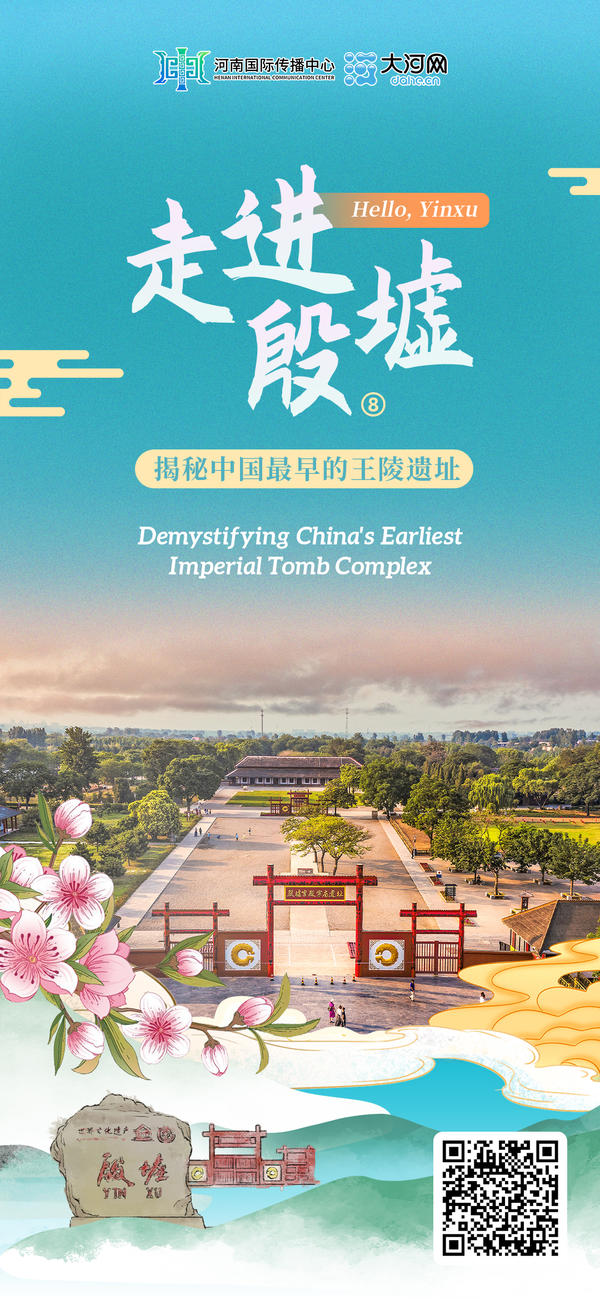Editor's note: As the capital site of the late Shang Dynasty (1600-1046 BC) confirmed by historic documents, archaeological excavations and oracle bone inscriptions, Yinxu (or the Yin Ruins) is usually regarded as the cornerstone of the project on tracing the origins of Chinese civilization launched by China in 2001. As a key component of world civilization, Yinxu has provided solid evidence for the continuity and pluralistic and integrated pattern of Chinese civilization, and was inscribed in the UNESCO world cultural heritage list in 2006. Together with oracle bone inscriptions, Yinxu has extended recorded Chinese history to nearly 1,000 years earlier than previously believed. Starting on October 25, we, together with HICC and Yinxu scenic spot, are launching a series of videos about Yinxu to help you gain a deeper understanding of it. Here is the 8th episode: Demystifying China's Earliest Imperial Tomb Complex.
编者按:作为中国历史上第一个有文献记载并为考古发掘与甲骨文所证实的都城遗址,殷墟是中华文明探源工程的原点和基石,是中华文明连续不断、多元一体的重要实证,也是世界文明史中重要一环,2006年被列入《世界遗产名录》。殷墟及甲骨文的重大发现把中国信史向前推进了近千年。为更好讲述中国故事、让世界读懂中国,10月25日起,河南国际传播中心、大河网联合殷墟景区共同推出“走进殷墟”双语系列报道。今日推出第8期:《揭秘中国最早的王陵遗址》。
Serving as a cemetery of the kings in the late Shang Dynasty and a place for sacrificial activities, the tomb complex of Yinxu or the Yin Ruins covers an area of 2.14 hectares, where 13 large tombs, over 2,000 sacrificial pits and subordinate tombs were discovered. The world-renowned Hou Mu Wu Ding (a sacrificial vessel crafted as a burial tribute) was also unearthed here. Besides, an incredibly large number of bronze vessels, jade articles and pottery wares have been discovered so far. Most of the tombs have 4 passages, with a large tomb chamber, luxurious coffin, abundant and exquisite burial objects, and a large number of human and animal sacrifices. The tomb complex of Yinxu is the earliest and the most structurally-intact imperial tomb cluster ever discovered in China, representing the highest level of early imperial cemetery construction in ancient China.
殷墟王陵遗址是商代晚期商王的陵地和祭祀场所,占地面积2.14公顷。在这里,考古工作者共发现13座王室成员大墓以及2000多座祭祀坑和陪葬墓,举世闻名的后母戊鼎(又称司母戊鼎)便出土于此。此外,王陵遗址还出土了数量惊人的青铜器、玉器、陶器等珍贵文物。值得一提的是,这13座大墓多为4墓道,墓室宽大,棺椁奢华,随葬品多而精美,人殉、牲殉数量惊人,它们共同构成了中国目前已知最早且完整的王室墓葬群,代表了中国古代早期王陵建设的最高水平。(杨佳欣/文 赵汉青/视频 丁岚/审校)

推荐阅读
 首页
首页